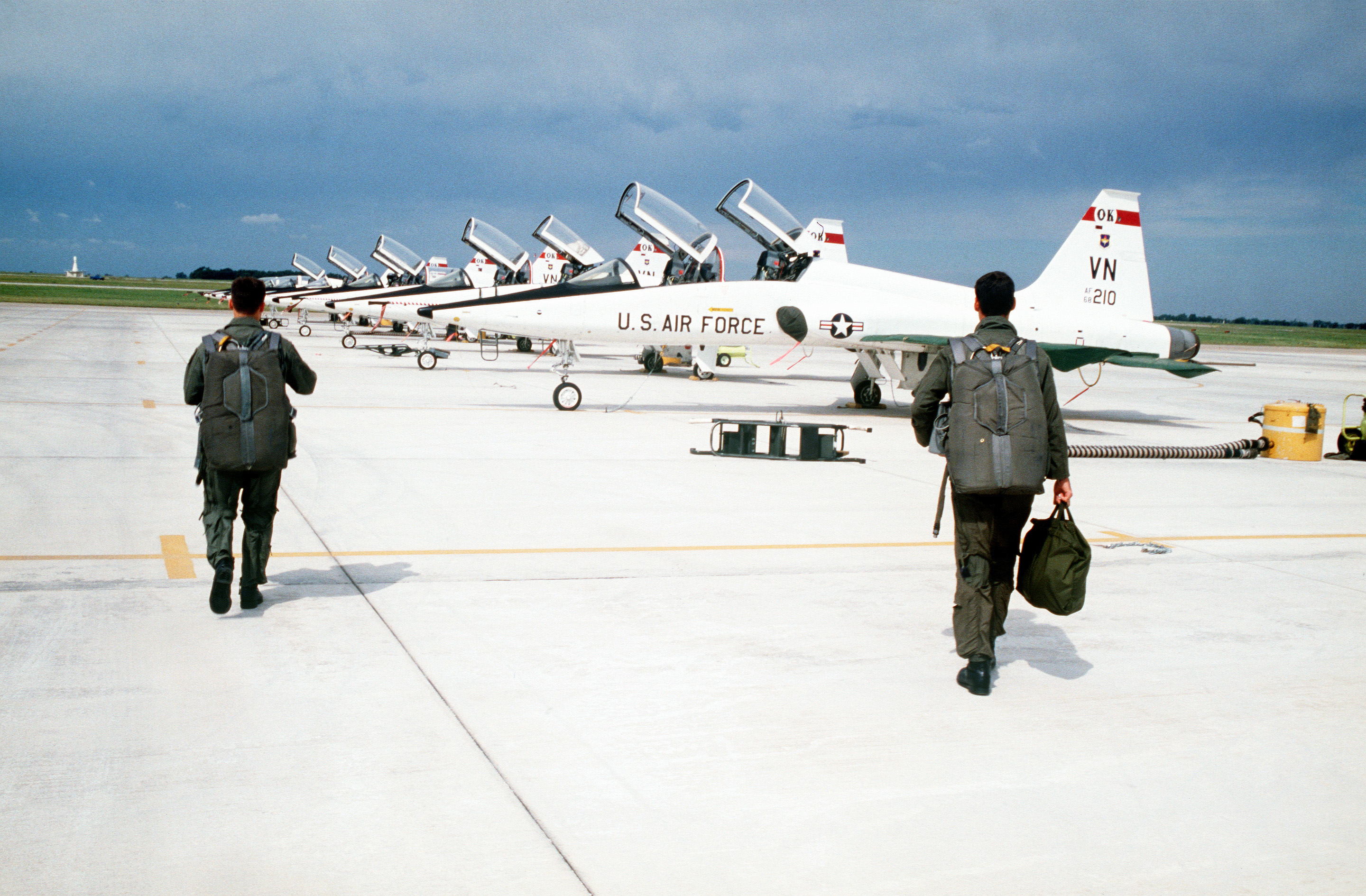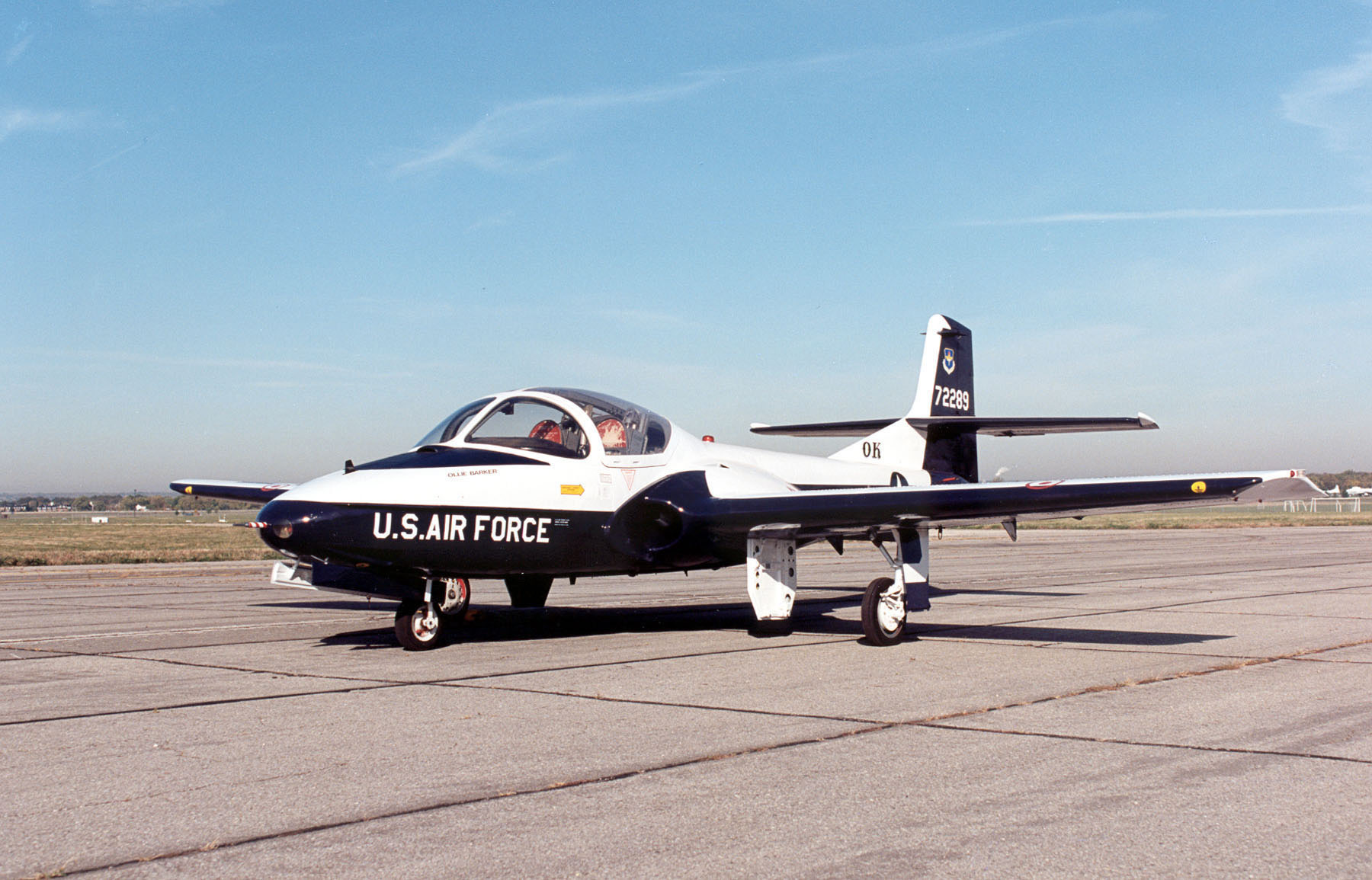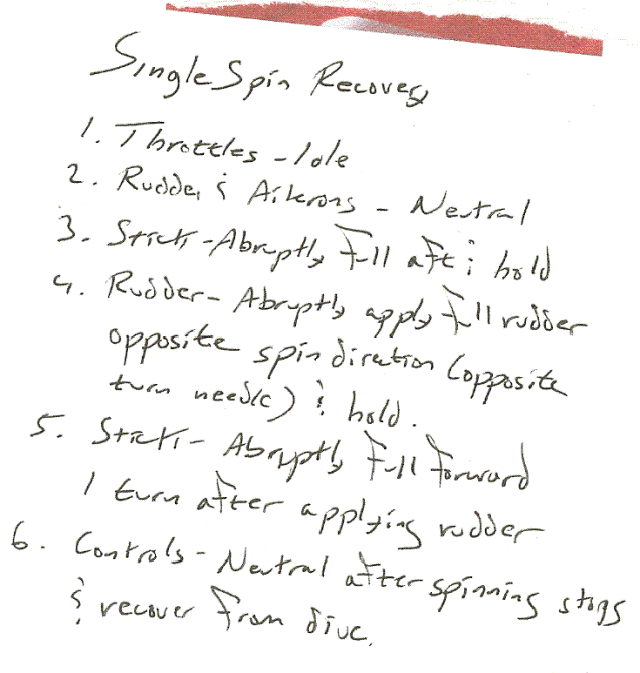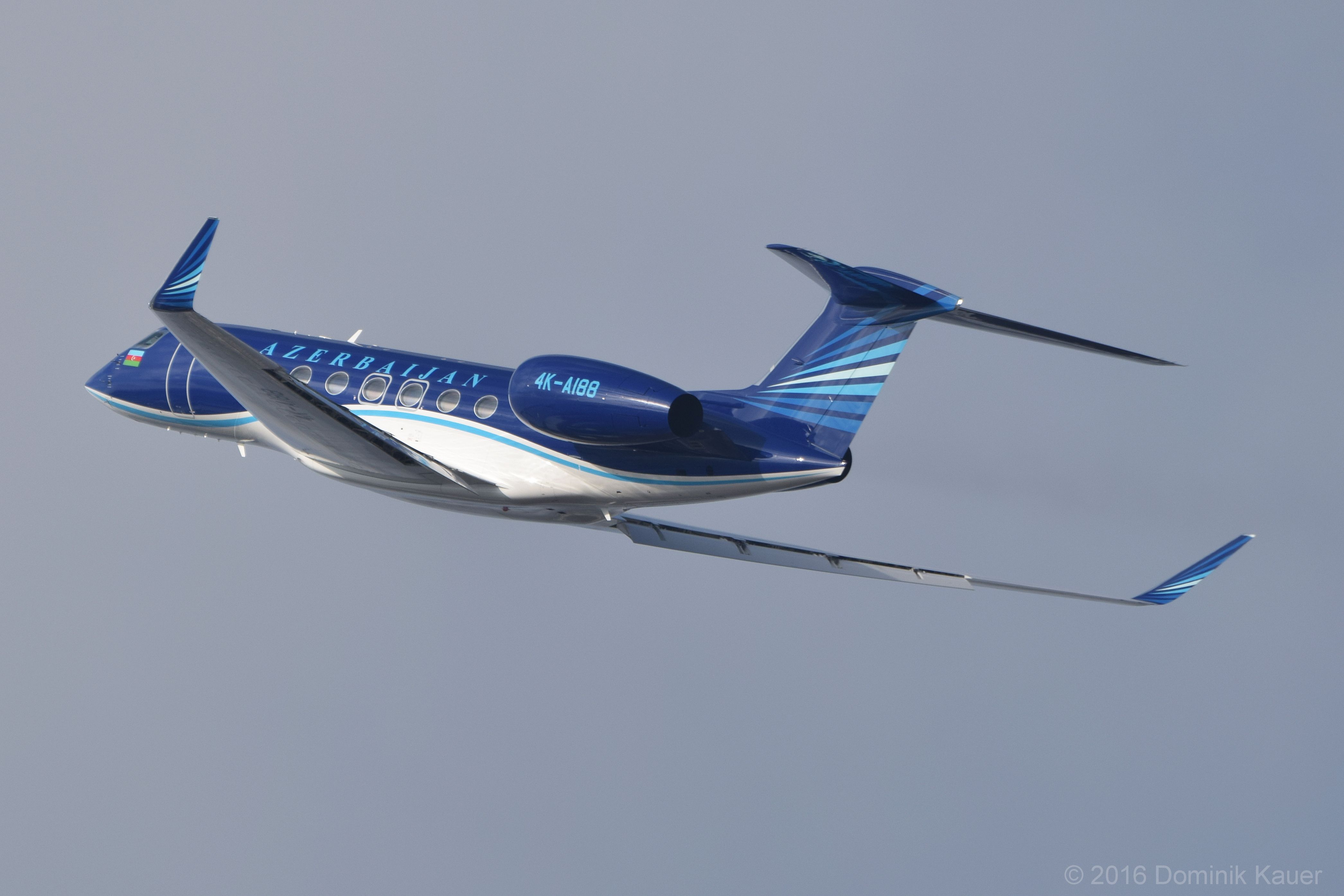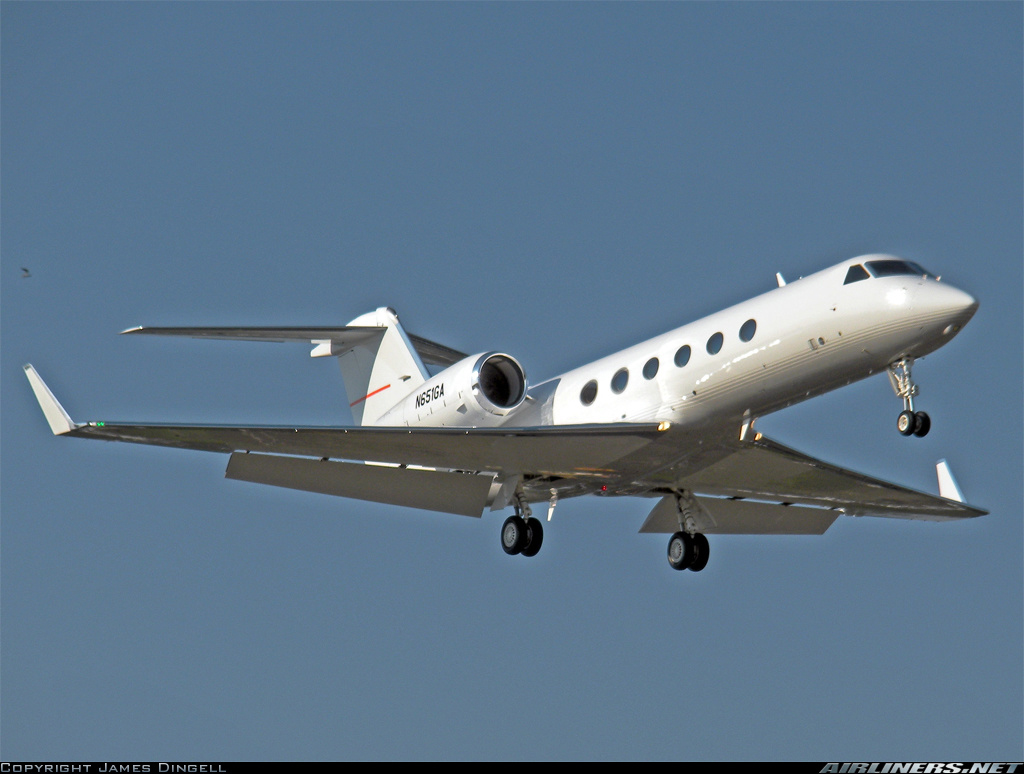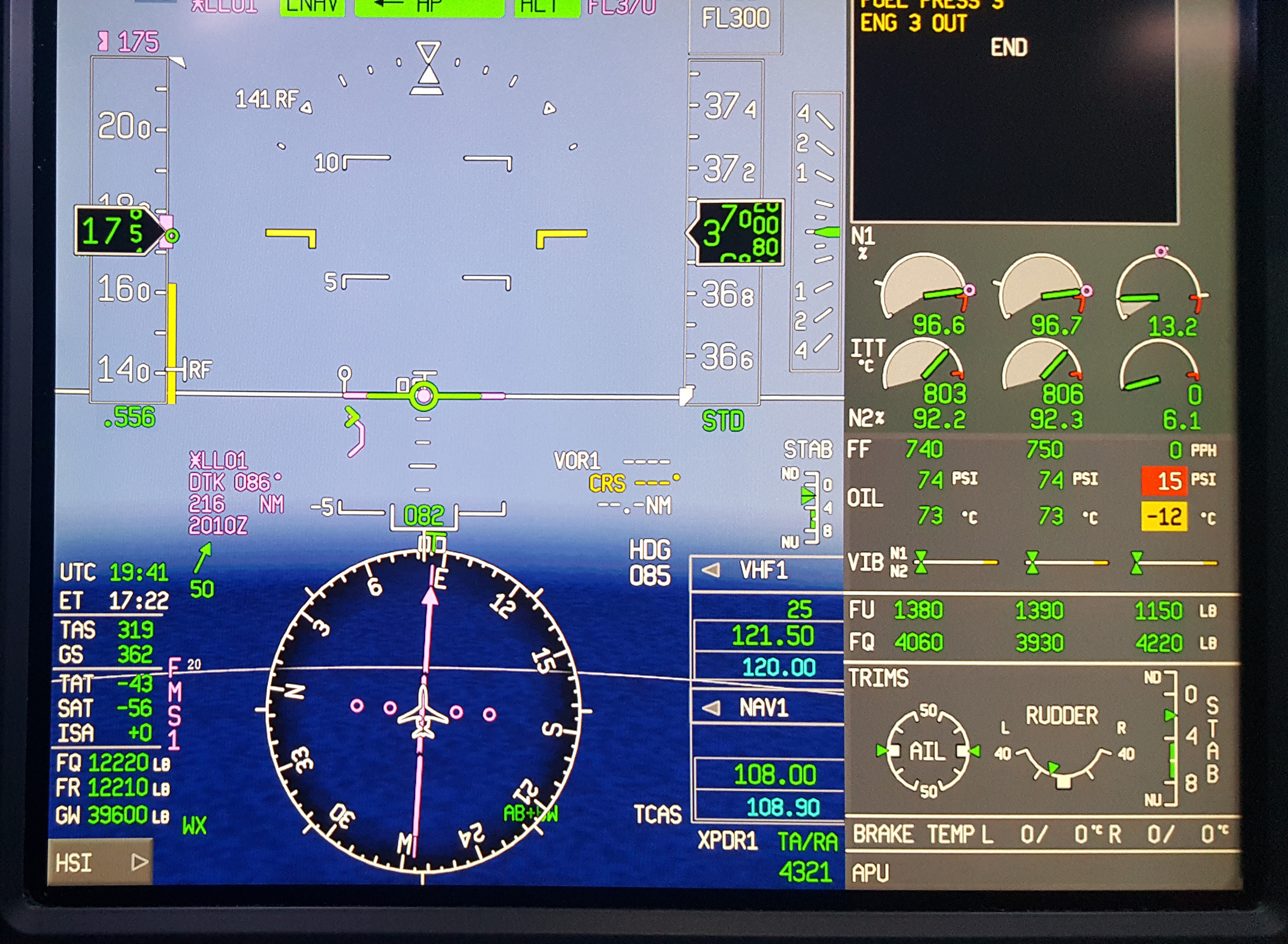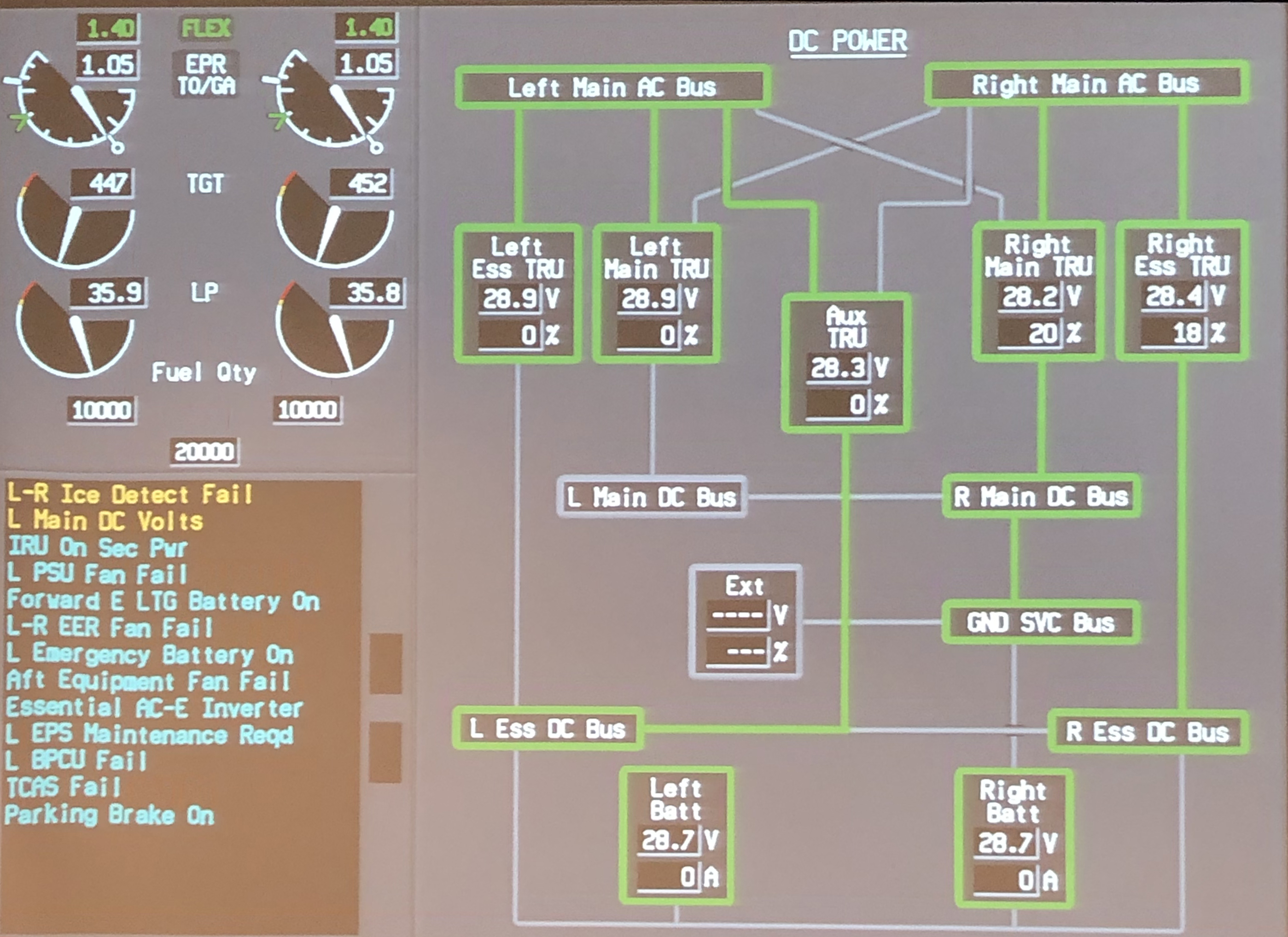How often in your cockpit are you required to do something so quickly that you have no time to read your checklist, no time to consult the crew, or no time to think?
— James Albright

Updated:
2019-04-28
Growing up as an Air Force pilot, I was fed a steady dose of what we called “Bold Print,” items in our checklists presented in a heavier type that had to be committed to memory. In the airplanes since, I've seen the "bold print" turned into bold faced items, boxed items, bracketed items, "Phase 1" items, and even no immediate action items at all. The industry trends seems to be away from these items you need to commit to memory, or at least reducing their numbers. But accident case studies tell us we need something to steer us in the right direction when things happen fast in our cockpits. Let's explore that.
I can still remember the routine every morning in pilot training, flying the Northrop T-38 Talon in 1979. An instructor surveyed the room, looking for an unsuspecting “stud” (we were not allowed to call ourselves students). “Lieutenant Albright,” he would say, “right after reaching decision speed on takeoff, you get a left engine fire light with all the indications you would expect. Tower says you are trailing flames and smoke. What will you do?”
At this point I was expected to stand at attention and rattle off the bold print, verbatim, assertively, and without hesitation. “Sir, throttles: max. Flaps: 60 percent. External Store: Jettison if necessary. Attain Airspeed above SETOS, 10 knots desired.”
Had I missed any word, gotten any of them out of order, or even misused the SETOS (Single Engine Takeoff Speed) acronym, I would be taken off the flight schedule for additional ground training. This ritual was called “stand-up” because we were expected to stand up, at attention, in front of our squadron mates and be put on the spot for some artificial stress. We were quizzed daily on the memory items in written and oral form. Failing the quiz was noted on our records so we took it all very seriously. But the stand-up ritual paid dividends. During my last cross country sortie of the program, flying the mighty T-38, I got that fire light right at decision speed while taking off from Naval Air Station Point Mugu, near Ventura, California. I executed the bold print automatically. The fire light, fortunately, extinguished. More about that day: Duck Soup.
2 — Getting it wrong: real world stress
3 — Getting it wrong: the failure to analyze
4 — Getting it right: forcing analysis
5 — Getting it right: the value of memory drills
6 — The real world: examining what you've got

1
Old vs. new school
That was the Air Force way, back then: know your “bold print” immediate actions cold, become automatic in an emergency, and never have to face a moment of panic in a cockpit while strapped into an ejection seat. Then along came the F-15 Eagle, with no bold print items at all. There began the memory items versus no memory items debate, something we civilians wrestle with as well.
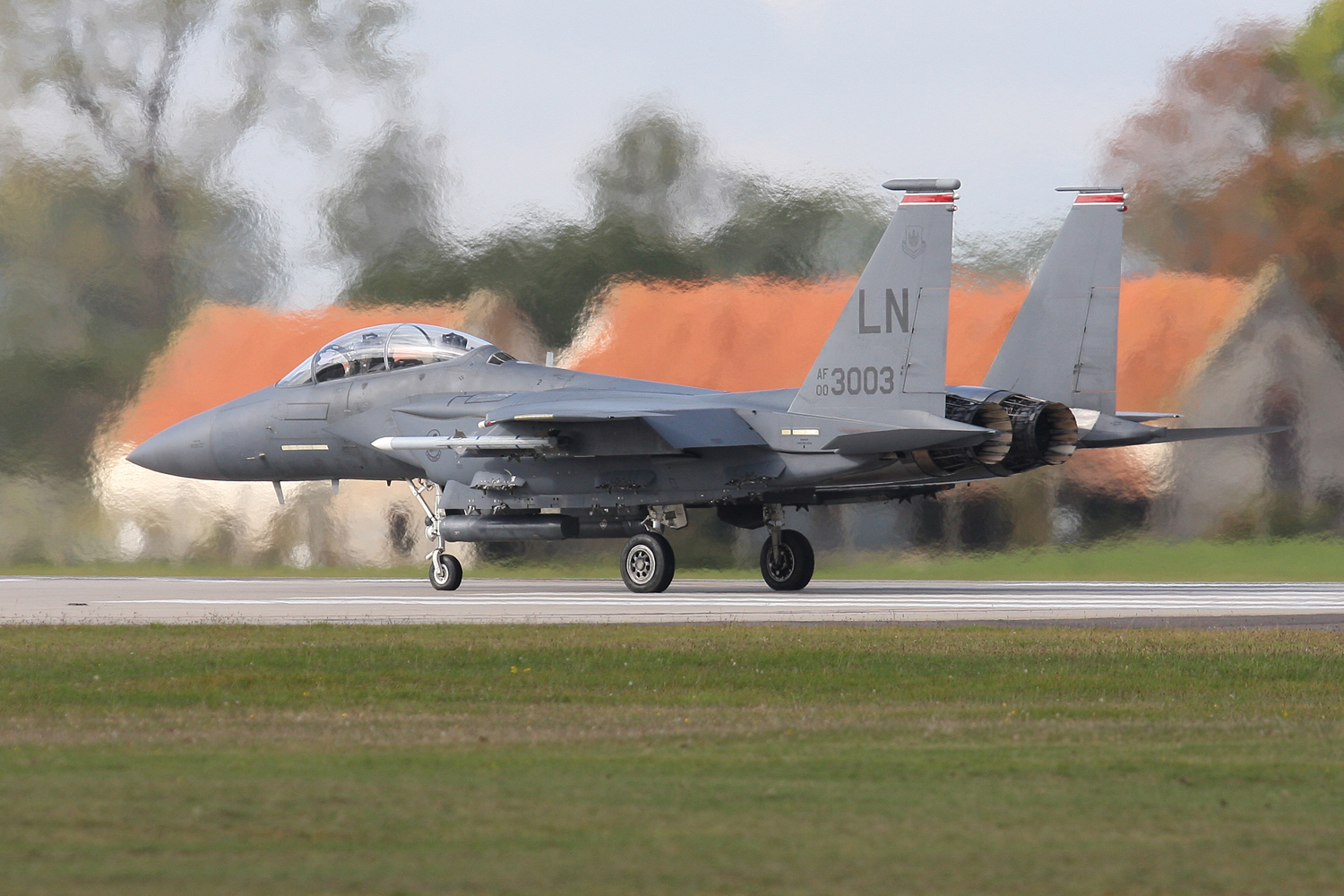
F-15 taking off from Lakenheath Air Base, England, (Photo: Matt Birch, visualapproachimages.com)
Industry Trends
In the early days of passenger carrying jets, most manufacturers seemed to have agreed with the military; flying a high-speed jet is risky business. Pilots needed to have ice water in their veins. Memory items were de rigueur in any jet cockpit, with or without an ejection seat. But sampling a variety of business and commercial aviation jets reveals an assortment of philosophies.
Dassault, for example, prescribes three phases of actions in emergency procedures. A “Phase 1” procedure “specifies immediate action to be accomplished from memory, without need for reference to the check-list.”
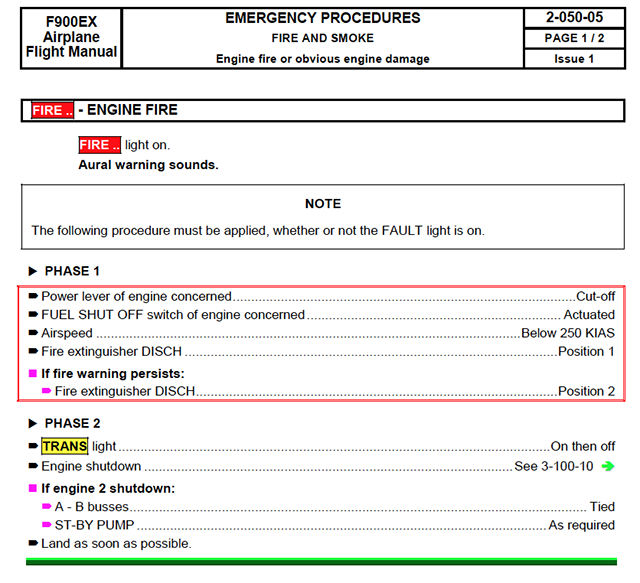
DA-900EX Engine Fire Checklist, from Dassault Falcon 900EX AFM, §2-050-05, p. 1.
Bombardier, as a second example, says procedures “concerned with foreseeable but unusual situations in which immediate and precise crew action, as indicated by the items within the ‘boxed’ area at the beginning of each procedure, will substantially reduce the risk of disaster.”
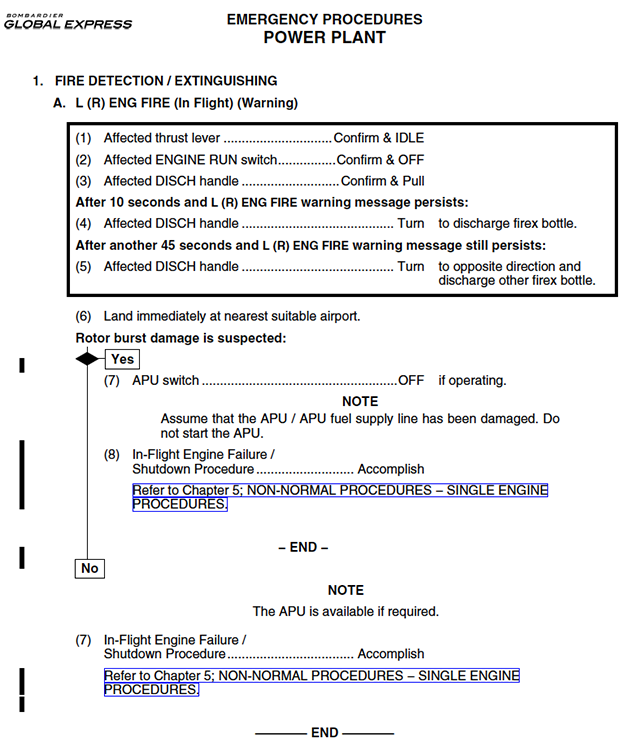
BD-700 Engine Fire Checklist, from Bombardier BD-700 AFM, §03-03-1.
Most manufacturers seem to favor memory items denoted by a box, brackets, or other printing methods. In some cases, the memory items are concise steps which are easily remembered. In many cases, however, the memory items include decision steps and alternate procedures. The memorization process becomes complicated. Individual operators may also add or subtract from the hodgepodge of memory items. But there are a few aircraft manufacturers and operators going in the other direction.
Memorization versus "accomplish by memory" versus "no memory items at all"
During most of my Air Force experience, "Memory Items" were memorized. You had to know them verbatim, were quizzed on them relentlessly, and failing to have each word memorized was cause for removal from the flying schedule for remedial ground training. Those were memory items that had to be memorized.
Looking at the two examples above, it becomes clear that these aircraft manufacturers do not expect that of their pilots. They expect their pilots to accomplish the items correctly and in the correct order, but certainly not to memorize every word.
There is a third method which appears to be inspired by the F-15 example, where pilots are expected to analyze every situation and come up with the correct actions in a timely manner. Newer Gulfstreams favor this method. You won't find any mention of memory items in their flight manuals, a fact noted by the FAA:
There are no memory items in the AFM for the GIV-X, GV, or the GV-SP.
Source: Flight Standardization Board Report, Gulfstream GIV-X (G350G450), GV, GV-SP (G500/G550), ¶3.1.11
So which method is best? Is there a best method? Let's look at two examples on how things can go wrong.
2
Getting it wrong: real world stress
The loss of an engine warrants immediate action on almost all aircraft, but the need to verify which engine has failed must override the speed at which an engine is shut down, especially if the aircraft starts with only two engines. The Aviation Safety Network lists 17 incidents where pilots of airline, military transport, or corporate aviation aircraft shut down the wrong engine in response to an engine indication, usually resulting in the loss of the aircraft and quite often to a loss of life.
TransAsia Airways Flight GE235

The crash of TransAsia Airways Flight GE235, (Aviation Occurrence Report, Figure 1.1-2)
The most notable recent example occurred to a TransAsia Airways Avions de Transport Regional ATR72 aircraft departing Taipei Songshan Airport (RCSS), Taiwan on February 4, 2015. The accident was made infamous because it was captured on video by an automobile dashboard camera. (Here it is: TransAsia GE235 video.) The public was alarmed that a professional aircrew could shut down the wrong engine, destroying the aircraft and killing 43 of the 58 persons on board.
The TransAsia Airways ATR72-212A Standard Operating Procedure for “Eng 1(2) Flameout at Take Off” includes 22 lines of procedures but never reminds the pilot to identify the failed engine. The Engine Warning Display, however, provides excellent cues for identifying which engine has failed as well as presenting the checklist procedure.
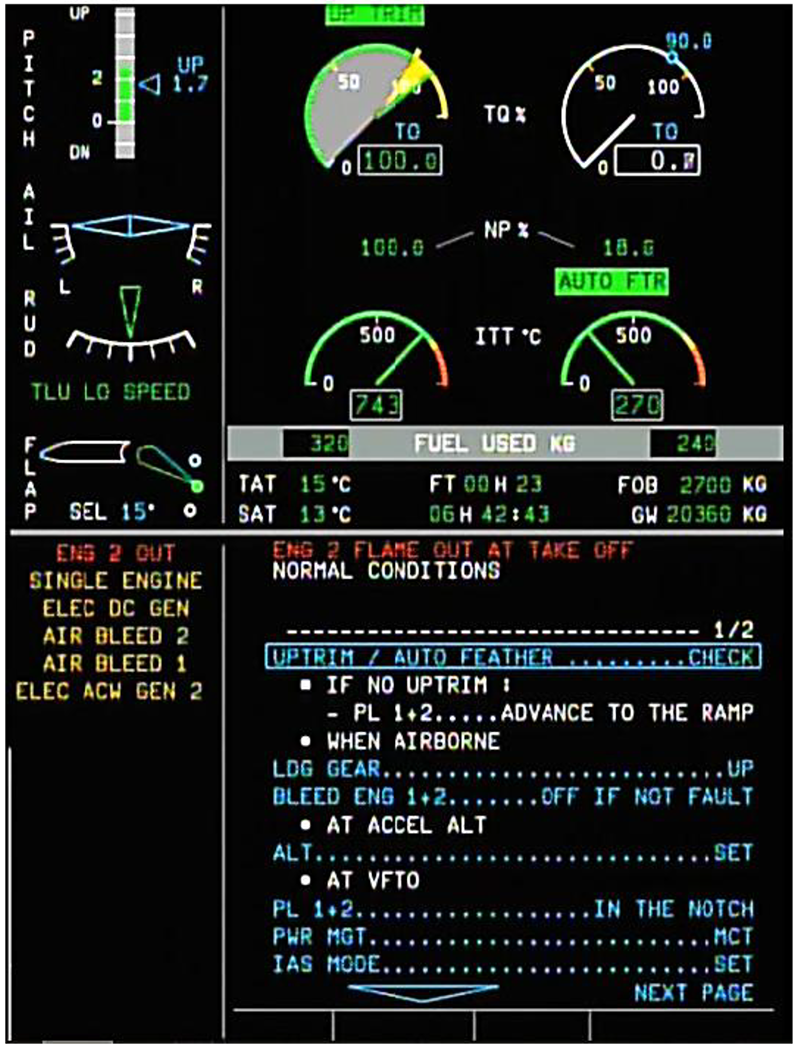
ATR72 Simulated Engine Warning Display indications, (Aviation Occurrence Report, Figure 1.6-4)
A faulty solder joint between a torque sensor and an auto feather system caused the number two engine to automatically feather. The autopilot automatically and correctly applied corrective control inputs but the pilot flying (PF) disconnected the autopilot and pulled the number one power lever. The pilot monitoring (PM) called out the correct throttle and momentarily questioned the PF’s initial actions, but did not follow through. The crew shutdown the incorrect engine before realizing the error, and the PF failed to keep the aircraft from stalling and rolling on a wing.
The PF was noted for being a nervous pilot and had a track record of failing to properly execute emergency procedures. It is unclear if he had the correct procedures memorized, only that he failed to correctly execute them. More about this: Accident Case Study: TransAsia Airways GE235.
This was a case where failed simulator check ride results could have predicted his actual aircraft performance. But there are many cases where a pilot’s cockpit performance under stress fell short of simulator training.
3
Getting it wrong: the failure to analyze
Simulated emergency procedures can produce real stress, but this stress is often tempered by the realization there is no real danger to life or property. When faced with the real stress of an actual aircraft emergency, aircrews can panic and fail to adhere to standard operating procedures.
British Midlands Airways Flight 092
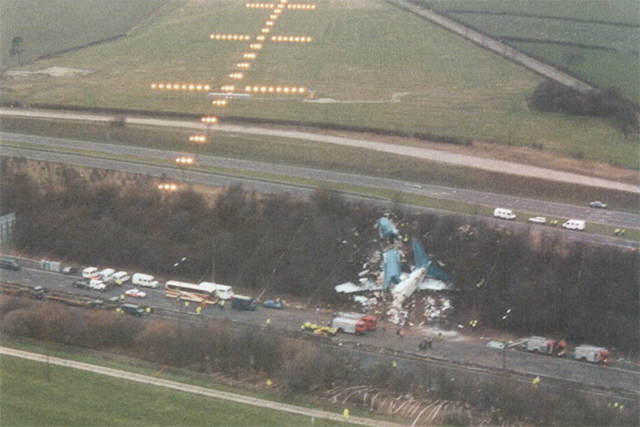
Crash site of G-OBME, from Accident Report, figure 1.
In 1989 a British Midland Airways Boeing 737 crew was faced with a series of left engine compressor stalls during an approach to East Midlands Airport (EGNX), United Kingdom, which caused the aircraft to vibrate and introduced the smell of fire through the air conditioning system. The “Engine Fire, Severe Damage or Separation” required its initial actions be made from memory, without reference to a checklist.
The Operations Manual included another reference to vibration in the non-normal procedures section under the heading 'ENGINE FIRE, SEVERE DAMAGE OR SEPARATION'. The reference read:- This condition is recognised by the fire warning bell ringing and an engine fire warning light illuminated, and/or airframe vibration with abnormal engine indications with or without yaw. 'If the emergency is positively corrected, the Captain should evaluate the situation before proceeding with the next step. If any doubt exists as to the condition of the engine or fire warning system, complete all recall items.' (The 'recall items' are the actions taken by the crew from memory for the emergency shut-down of an engine. (1.17.2.3))
Source: Accident Report, §1.17.2.4
Two engine shutdown procedures were given in the aircraft checklist. The 'Engine Failure and Shutdown' procedure was intended to be accomplished by reference to the checklist. The 'Engine Fire, Severe Damage or Separation' procedure was for more urgent situations and required the initial actions to be accomplished from memory (the 'recall' items). Only the latter procedure called for the use of the engine fire extinguishing system.
Source: Accident Report, §1.17.2.3
High engine vibration. In March 1988 Boeing issued an Operations Manual Bulletin on the subject of CFM 56-3 engine vibration. It defined 'high engine vibration' as a condition indicated by a reading on the vibration indicators in excess of 4.0 units accompanied by perceivable airframe vibrations. It introduced the following procedure:
- Thrust lever . . . RETARD
- Flight conditions permitting, reduce N1 to maintain AVM [Airborne Vibration Monitor] below 4.0 units.
Source: Accident Report, §1.17.2.4
But the crew was unfamiliar with engine behavior during the initial moments of a compressor stall and were uncertain about which engine had failed. The PF failed to keep the aircraft in coordinated flight, robbing him of a clue that the right engine was still producing thrust. Because his previous aircraft experience led him to believe air conditioning smoke could only be produced by the right engine, he shut down the wrong engine. While the situation was outside his training experience, the perceived need to react instantly to the situation led to his hasty decision to shut down the only operating engine. The aircraft impacted just short of the runway, killing 47 of the 134 people on board. More about this: Accident Case Study: British Midland Airway Flight 092.
In the first example the PF’s instant reaction bypassed the need to identify the failed engine. In the second example, the perceived need to act quickly led to the shutdown of an operating engine before the failed engine’s indications made clear which engine was operating and which was not. The ATR’s memory items were long, complicated, and easily forgotten during the heat of battle. The Boeing’s memory items were short, succinct, but didn’t mention the need to be certain of which engine was to be shut down. So just because you have a memory item doesn’t ensure success during the stress of an actual aircraft emergency.
4
Getting it right: forcing analysis
In both of our examples, indeed in most wrong engine shutdown episodes, pilots were either cautioned that the first step in any emergency procedure is to analyze the situation or their immediate action memory items included such a caution, such as "applicable engine" within the checklist itself. But in each of these incidents the analysis was either skipped or carried out too hastily. Clearly, pilots need to be reminded.
Situational awareness is assumed
Some manuals state up front that pilots must become situationally aware before taking action, and then leave out the analysis step from individual procedures. The TransAsia Airways Flight Crew Operations Manual, for example, lists the four steps for effective decision making with the SAFE mnemonic:
- S – State the problem
- A – Analyze the options
- F – Fix the problem
- E – Evaluate the result
Source: Aviation Occurrence Report, §5.10.1
Many immediate action memory items skip the first two SAFE steps and either assume the pilot has done this first, or combine these steps into the “Fix the problem” step. In the case of an engine shutdown, for example, rather than say “Identify failed engine, throttle idle, fuel switch off,” the procedure might say “affected throttle idle, affected fuel switch off.” Both methods work, but the former forces the pilot to think about which throttle while the latter assume the pilot’s hands will make the correct selection.
The Cessna Citation 750 Airplane Flight Manual has the pilot commit the following part of the Engine Fire checklist to memory:

Engine Fire (Eng Fire Light and Engine Fire L-R CAS Message) Immediate Action Items, (CE-750 AFM, p. 3-8)
The checklist works, but if the pilot rushes through it, the "affected engine" may be recited only after a snap decision has already been made. Will the pilot make such a mistake in the heat of battle? Don't we practice these decisions enough in the simulator to train these hasty snap judgments out of the pilot? Apparently not . . .
Simulator stress is simulated (not real)
- An inflight emergency requiring timely action imposes a great deal of stress on the flight crew. Previous studies have shown that recall under high-stress conditions is more prone to errors than recall under low-stress conditions. These errors, as they relate to checklist use, may include errors in identifying the abnormal condition, selecting the correct checklist, and errors of commission (adding steps or performing steps incorrectly), omission (missing steps), or order (completing steps in the wrong sequence).
- It is possible that training can mitigate some of these effects. However, even though pilots receive regular training in emergency procedures in simulators, that does not mean they are unaffected by the stress of an actual emergency. An emergency in a simulator is not perceived as life-threatening. If the pilot fails, the simulator can be reset for another attempt. Unless a pilot has had repeated experience in dealing with a truly dangerous emergency, performance in a real emergency could be similar to a novice. It has been shown that subjects are able to inhibit fear and prevent it from affecting their performance only if they are repeatedly exposed to a dangerous situation. Due to the reliability of today’s airliners, it is unlikely for the average airline pilot to have this kind of exposure in an airplane.
- Using an emergency descent as an example, an earlier study showed that crews performing an emergency descent from memory took longer to descend than crews using the checklist. The difference in descent time resulted from omission errors by crews performing memory items. They occasionally omitted deploying the speedbrake, causing the airplane to descend slower. On the other hand, crews that performed the procedure by reference to the checklist did not make these errors, but took longer to complete the checklist. Regardless of the time required to read through the checklist, the crews performing the procedure by reference descended to a safe altitude in less time because of the use of the speedbrake.
- The perceived requirement to perform checklist steps quickly from memory during high-stress situations is at odds with the need to perform those checklist steps accurately. There is a potential for loss of accuracy as the performance speed increases. Attempting 100% accuracy would require so much time to complete a checklist that other flying tasks would be disrupted. There is a trade off between getting the procedure done quickly, and getting it done while minimizing the possibility of error.
Source: Boeing Study
The analysis step is forgotten
- An evaluation of Boeing 737 line pilot performance of memory items in 5 abnormal checklists was performed in a single-blind experiment using tabletop exercises at the crew base of a major U.S. airline . . . . When presented with cues to an abnormal situation, pilots sometimes omit a thorough analysis of the situation. This became evident through previous observations of pilots performing abnormal procedures in simulators and anecdotal evidence. The pilots in this study demonstrated a tendency to fixate on the most prominent cue and perform the checklist appropriate to that cue. However, a thorough analysis of the situation can reveal that the single most prominent cue does not always lead the pilot to the correct checklist.
Source: Boeing Study
Two solutions: real world experience — OR — remind the pilot
I once flew Air Force Boeing 707's that had become poorly maintained and started to experience almost regular engine failures. I noticed that of sixteen total engines spread among four aircraft, one was certain to fail each month. I started to think of our squadron as the "engine a month" club. Soon pulling out the emergency procedures section of the checklist became routine and the shock of having an engine catch fire, compressor stall itself to pieces, or simply quit became routine. Instead of "oh no!" we started to experience "not again!" In this environment, stress evaporated and immediate action items became routinely immediate.
As the Boeing study points out, it is unlikely pilots today will have such a "ho hum" attitude toward these kinds of emergencies. Real world experience with emergency procedures, then, is becoming rare. What to do?
A similar unfamiliarity with these kinds of stresses is experienced by all novice pilots, even those flying jets with hardly any experience of any kind. I had a total of 25 flight hours in my logbook when I first flew the Cessna T-37B. The Air Force forced me to learn the emergency procedures with a steady dose of memory drills. I think this can work in the civilian world too.
5
Getting it right: the value of memory drills
How do you get a young lieutenant with barely enough hours to solo a primary trainer (Cessna 152) to fearlessly fly a fully aerobatic jet (Cessna T-37B)? You have to train the fear out of the young student pilot so that any emergency procedure does truly become automatic. They did that with memory drills.
The Air Force Undergraduate Pilot Training (UPT) example
The T-37 was designed to spin. It could not only be easily flown into a spin, it could sustain the spin all the way to the ground unless you actively got it out of the spin. The Air Force training manual describe the maneuver thusly:
There is no definite number of turns, pitch attitude, or airspeed to describe a stabilized spin. As a guide, a stabilized spin is normally characterized by a constant pitch attitude (approximately 40° to 45° nose low), a constant rate of rotation, and steady airspeed. The altitude loss is approximately 550 feet per turn in a stabilized spin and the duration of one turn is approximately 3 seconds.
Source: ATCM 51-4, ¶4-27.g.
It is my experience that the manual's sterile description doesn't do the maneuver justice. A video comes closer: T-37 Spins. Skip to 1:05 to see the spin as seen by another aircraft, from the cockpit, and the recovery.
The recovery procedure was known as the “Single Spin Recovery” not because it could get you out of one spin, but the one procedure could get you out of any spin. The procedure, all 43 words and 6 lines, had to be committed to memory:
- Throttles – Idle
- Rudder and ailerons – Neutral
- Stick – Abruptly full aft and hold
- Rudder – Abruptly apply full rudder opposite spin direction (opposite turn needle) and hold
- Stick – Abruptly full forward one turn after applying rudder
- Controls – neutral after spinning stops and recover from dive
Missing a single step during the flight could prevent recovery, but missing a single word during the pre-brief could keep you from flying. The task of committing the procedure to memory appeared near impossible to us student pilots on day one. But we learned a few secrets along the way that made it easier.
How to memorize, verbatim
First, you need to handwrite the procedure over and over again. Your hands are connected to your brain in more ways than one, and the physical act of writing cements the words into your memory. You don’t even have to write legibly and you don’t have to ever read what your write. My first instructor recommended that I write the procedure down at every spare moment until I got them 100% correct. And then he recommended that I keep doing that at least a few times each day. You couldn’t solo until you had the procedures down cold and you couldn’t get your wings unless you could fly the maneuver flawlessly.
How to keep it memorized
In my Boeing 707 squadron we had five immediate "BOLD PRINT" action items to memorize. We required the pilot recite each, verbatim, as part of the before starting engines briefing.
In the event of an engine fire on the ground, THROTTLE CUT OFF, FIRE SWITCH PULL. I'll taxi the aircraft to the reef runway and call for a reduced thrust setting. If we see a need to abort the takeoff: THROTTLES IDLE, SPEED BRAKES 60 DEGREES, BRAKES APPLY. After we are airborne if we need to crash land: FLAPS 50 DEGREES, LANDING GEAR DOWN, THROTTLES CUT-OFF AFTER TOUCHDOWN. In the event of an engine fire during flight: THROTTLE CUTOFF UNLESS NEEDED, FIRE SWITCH PULL IF REQUIRED. In the event of a fuselage fire: OXYGEN 100% ALL. Are there any questions?
I will be the first to admit that these immediate action items were written poorly, incompletely, and failed many of the criteria I've already suggested need to be used when coming up with memory items. But the point here is that they were concise enough to be rattled off in one briefing so that we did just that prior to every flight. During my five years flying that airplane, I had to use all of those immediate actions except for the crash landing. The fact we practiced reciting them prior to every flight meant I never failed to remember them when the real thing happened.
6
The real world: examining what you've got
We've seen that most checklist memory items are too long to memorize verbatim and that can hinder recall under times of actual (not simulated) stress. We've also seen that few checklists include the analysis step up front, when needed. Perhaps we can fix that.
Research guidance
- Barbara Burian, Human Factors specialists with the NASA Ames Research Center, has undertaken a number of research activities with respect to human factors and checklists. In her 2004 paper, she states ‘emergency and abnormal checklists are essential tools flight crews use to respond appropriately to situations that can be very serious and time critical. Therefore, it is crucial that these checklists be complete, clear, and easy for the crews to use’. In her research however, Burian acknowledges that only a few of the factors related to the design of emergency and abnormal checklists have been identified and discussed by research and operational communities. Burian goes on to highlight memory items as one of the areas having been previously addressed to a limited degree but still requiring further research (Burian, 2004).
- Within its document ‘Guidance on the Design, Presentation and Use of Emergency and Abnormal Checklists’ – CAP 676, the UK CAA defines the term ‘Memory Items’ as ‘Those actions normally resulting from an Emergency situation which must be performed immediately by the crew without reference to any checklist, but which, nevertheless, are included in the checklist for verification purposes’. The document goes on to make reference to the limitations of human memory with respect to item recall of items and provides the following recommendations with regard to checklist design:
- Memory items should normally be at the start of a drill.
- Memory items should clearly be indicated, e.g. by colour shading, or by `boxing'. An explanation in the OM or Philosophy Notes showing how these memory items are indicated should be included.
- The number of steps in a memory item should be kept to a minimum (preferably fewer than four and certainly no more than six for multi-crew operations; single pilot operations may require a greater number of steps).
- Simple mnemonics can be used as an aid.
Source: EASA Research Project, §4.1, Checklist design
While the purpose of checklist memory item and the resultant benefits to the flight crew has been discussed previously within this document, memory items do face a number of criticisms:
- Checklist memory items rely upon the flight crew to correctly identify the problem and provide a solution appropriate to that issue specifically.
- Selection of an inappropriate checklist will lead to incorrect actions being taken.
- Implementation of memory items does not allow for the analysis of the issue itself, thus implying the possibility for the problem to be exacerbated or attempts to solve the wrong problem.
- Attention is drawn away from environmental stimuli, resulting in a reduction in cognitive processing.
- By nature, human memory is subject to human error.
Source: EASA Research Project, §4.4, Memory items criticisms.
Example: Improving good procedures (Example: Citation X)
Typical memory items for an engine fire will either omit any verification step to ensure the correct engine is identified or will combine the verification step into the action steps. The Citation X AFM “Engine Fire (ENG FIRE LIGHT AND ENGINE FIRE L-R CAS MESSAGE)” procedure, for example, includes verification in the individual steps:
- Throttle (affected engine) – IDLE.
- ENG FIRE Switch – CONFIRM, then LIFT COVER and PUSH.
- Either illuminated BOTTLE ARMED light – PUSH (bottle armed light goes off).
IF ENG FIRE LIGHT REMAINS ON (15 SECONDS) PROBABLE FIRE
The procedure then continues with several steps that are completed with reference to the checklist. The problem with making the first memory item an action step is that it may push the pilot into making a hasty decision on which is the “affected engine.” It may be better to insert a separate verification step. Once that is done, there is still the assumption the pilot remembered to time the fire light. The remaining steps can be simplified to make memorization easier:
- Affected engine – Identify.
- Affected throttle – IDLE.
- Time – 15 seconds.
- If light remains on, affected ENG FIRE Switch – PUSH.
- Either BOTTLE ARMED light – PUSH.
Even with the added verification step, we’ve reduced the number of words to memorize from 34 to 23.
Example: Turning checklist procedures into immediate action procedures (Example: Gulfstreams)
You may find that your manuals fail to label procedures that must be completed immediately without reference to a checklist as immediate action items. This is especially true if you are flying a Gulfstream:
Gulfstream's philosophy is to not identify any steps in the GVI abnormal or emergency procedures as “Memory Items”, yet Gulfstream expects pilots to perform some of the initial and critical steps without reference to any documentation. Gulfstream has advised that the initial, critical pilot responses for the following emergency procedures should be performed promptly without reference to a checklist: Rejected Takeoff, Engine Failure/Fire after V1, Emergency Descent, Rapid Decompression, Autopilot (AP) or Autothrottle (AT) Uncommanded Disconnect, Engine Exceedance, Overspeed, Stall Protection / Stall Warning Activation, Flight Control Jams, Total Loss of Braking, Enhanced Ground Proximity Warning System (EGPWS) Alert, Windshear Alert, and Traffic Alert and Collision Avoidance System (TCAS) Alert. In addition, pilots are expected to don oxygen masks promptly when appropriate – for example when smoke is detected. Operators and training providers should ensure pilots are trained accordingly.
Source: Flight Standardization Board (FSB) Report, Gulfstream GVI
The G650 emergency procedures are very well designed and often make intuitive sense. While Gulfstream tells the FAA they expect pilots to perform some of the initial items of some of the procedures promptly and without reference to a checklist, the pilot is never told that. The pilot also is left to guess which items are immediate action and which can wait for the checklist. It would serve the pilot well to come up with immediate actions which agree with the procedures, are easy to remember, and set the pilot up to analyze before acting. The "Engine Fire in Flight" checklist has 29 steps, here are the first 9:
- Warning Tone . . . SILENCE BY DEPRESSING MASTER WARN
- Identify Affected Engine . . . BOTH CREW MEMBERS AGREE
- Affected Engine Power Lever . . . IDLE
- Affected Engine FUEL CONTROL . . . OFF
- Affected Engine MAIN and ALT Fuel Boost Pumps . . . OFF
- Affected Engine FIRE Handle . . . PULL
- Affected Engine FIRE Handle . . . ROTATE TO DISCH 1, TURN TO EXTREME OUTBOARD POSITION
- FIRE TEST / FIRE DETECTION Tests . . . PERFORM
- Affected Engine FIRE Handle . . . ROTATE TO DISCH 2, TURN TO EXTREME INBOARD POSITION
NOTE: The flight crew shall agree on the correct (affected engine) FUEL CONTROL switch and Fuel Boost Pump prior to placing them in the OFF position, and the correct FIRE HANDLE prior to actuation.
NOTE: When it is necessary to discharge a fire bottle, ALWAYS use DISCH 1 first. This preserves Fire Bottle 2 for use in an APU fire, because only the left fire bottle is plumbed to the APU container. If an engine fire persists, however, the fire handle may be rotated to the inboard DISCH 2 position.
If fire warning indications are no longer present:
If fire test / fire detection tests are satisfactory, proceed to Step 10.
If fire test / fire detection tests are not satisfactory, or fire warning indications persist for 30 seconds:
Source: Gulfstream G650 QRH, pp. EC-3, 4
Gulfstream attempts to harmonize checklists across the fleet where able and this particular checklist represents a great improvement over those found in past Gulfstreams. I especially like the identify step. I think the "Warning Tone . . . Silence" can go without saying. Because Gulfstream doesn't identify any of the steps as immediate action, it is up to us to determine at what point we can pull up a checklist. I think the point where you are left waiting for 30 seconds would be a good time to pull up the checklist. So I would write my own memory items this way:
- Identify affected engine
- Affected power lever - idle
- Affected fuel control - off
- Affected fuel boost pumps - off
- Affected fire handle - pull, rotate outboard
- Time for 30 seconds, refer to checklist
I believe everything else is self explanatory and writing the immediate action this way improves the odds I will remember them.
Of course I'm not flying a Gulfstream G650, but I am flying a G450 which also has no defined immediate action items. So I've written my own:
Rejected Takeoff
- Power levers - Idle
- Brakes - Apply
- Speed brakes - Extend
- Thrust reversers - As required
- When stopped - Refer to checklist
Engine Failure/Fire Above V1
- VR - Rotate
- V2 to V2+10 - Climb
- Landing gear - Retract
- Climb to 1500 feet or obstacle height
- Flaps - Up once above V2+10
- Refer to checklist
Some would argue this should cover engine fire procedures, but there is a separate procedure for that and nothing says you can't have one immediate action followed by another . . .
Engine Fire In Flight
- Identify affected engine
- Affected engine power lever - Idle
- Affected engine fuel control - Off
- Affected engine fire handle - Pull
- Affected engine fire handle - Rotate outboard
- Time for 30 seconds
- Refer to checklist
Dual Generator Failure
- Crossflow valve - Open
- Main boost pumps - On
- Alt boost pumps - Off
- Gen switches - Off then on
- AC/DC Reset - Push
- Refer to checklist
Emergency Descent
- Power levers - Idle
- Pitch - Lower to achieve MMO/VMO, then extend speed brakes
- Turn - as required
- Autopilot - engage with VMO, 15,000', and heading
- Refer to checklist
Note: you are better off leaving the autopilot engaged throughout and using the TCS to lower the nose, but if for some reason the autopilot was disengaged, you should by all means re-engage it as soon as possible. (The autopilot is not as prone to passing out as you are.)
Rapid Decompression
- Crew oxygen masks - Don
- Emergency Descent - Commence
- Passenger oxygen masks - Deploy
- Refer to checklist
Autopilot (AP) or Autothrottle (AT) Uncommanded Disconnect
- Fly the airplane
Engine Exceedance, Overspeed
- Identify affected engine
- Affected power lever idle
- Refer to checklist
Go-Around
- Pickle
- Power
- Pitch
- Flaps - 20
- Gear - Up
- Navigate
The first step is from my earliest days flying jets: "Pickle" means press the takeoff / go-around (TOGA) button. The last step is a recent addition, it seems we do this often enough where navigating to the alternate can slip your mind.
Stall Protection / Stall Warning Activation
- Power levers - Full forward
- Pitch - Lower to break the stall
- Roll - Unload the wing
- Attitude - To recover to level flight
Note: The most important step is to break the stall and from that point you may be recovering from an unusual attitude. This doesn't necessarily mean rolling wings level and pulling or pushing to the horizon. See: Unusual Attitudes Recovery.
Jammed Stabilizer
- Reduce pitch with bank / increase pitch with trim
- Refer to checklist
Runaway Pitch Trim
- A/P DISC - Push and Hold
- Pitch trim - Disengage
- A/P DISC - Release
- Refer to checklist
Total Loss of Braking
- PTU and AUX Pump - On
- Brakes - Release
- Anti-skid - Off
- Brakes - Apply 400 PSI maximum
- Parking Brakes - Apply 400 PSI maximum if brake pedals inoperative
Uncommanded Nose Wheel Steering
- Differential brakes and rudder - Use
- Nose wheel steering switch - off
Enhanced Ground Proximity Warning System (EGPWS) or Windshear Alert
- Autopilot - Disconnect
- Power levers - Full forward
- Speed brakes - Retract
- Pitch - Rotate 3 to 4 degrees per second to achieve V2/VREF - 20
Traffic Alert and Collision Avoidance System (TCAS) Alert
- TCS - Press and hold
- Pitch - Fly-to-Box
- ATC - Notify "TCAS RA"
- When clear of conflict, release TCS, report "returning to assigned altitude"
Oceanic drift down
- Identify failed engine
- Operating engine - maximum continuous thrust
- Set VVI - 600 fpm
- Turn - away from tracks and/or towards alternate
- Refer to checklist
That last item might surprise you. Read on . . .
7
The real world: adding what you need
Your aircraft may or may not require the same items to be committed to memory and may indeed have more. I can think of another item for most large cabin Gulfstreams that quite often do not apply to other long range business jets: oceanic drift down. Exploring the reason behind this can help illustrate how to determine which procedures require immediate action and which do not.
Drift Down Example: Immediate action item needed (Example: Large cabin Gulfstreams)
Drift down procedures are designed to get a multi-engine aircraft from high altitudes to lower altitudes following an engine failure with a minimal loss of altitude while maximizing forward distance traveled. Picture an airplane between California and Hawaii at Flight Level 410 which is at or near the airplane’s optimal long range altitude. If an engine were to fail, the aircraft can no longer maintain altitude and will need to find a suitable airport to land as soon as possible. Ideally the aircraft will end up at the optimal engine-out altitude after traveling as far as possible during the descent. Does this procedure need to be done immediately, hence requiring memorization, or will the crew have time to pull out the checklist, consider options, and notify the oceanic control area’s air traffic control first? It depends.
Most large cabin Gulfstream pilots would do well to memorize the following:
- Identify failed engine
- Set operating engine maximum continuous thrust
- Turn to avoid tracks or towards alternate
- Begin a 300-600 fpm descent
- Look up drift down speed and altitude (G450 QRH EB-16)
In the G450 it all happens instantaneously:
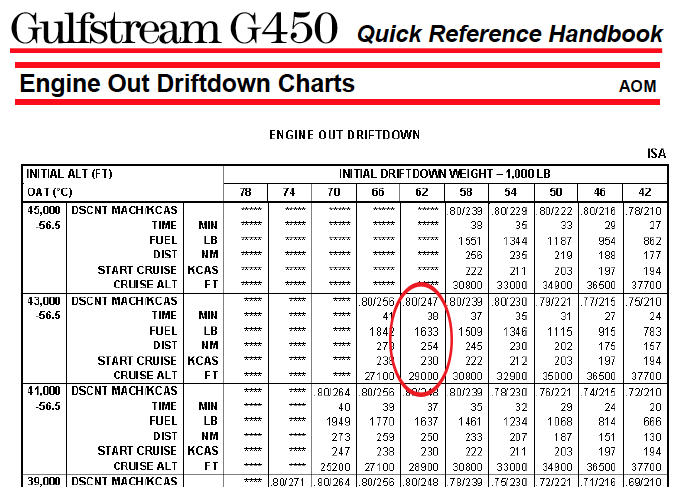
G450 Engine Drift Down Chart, (from G450 QRH, p. EB-16)
In the G550 you might have fifteen seconds or so before you have to start down. In either case, you need to know what you are going to do and which direction you are going to turn if you hope to avoid the traffic below you while maximizing your forward distance. But this problem isn't shared by most other business jets.
Drift down Example: Immediate actions not needed: (Example: Challenger 605 and Falcon 900EX)
A Challenger 605, for example, drifts down at a much slower speed than it cruises at and will have almost two minutes before having to descend. This might be due to the aircraft’s shorter wing span and lower thrust-to-weight ratio. I'm not sure but I have tested this in the simulator to verify the charts. In the Challenger 605 I would simply remember to set max continuous thrust on the operating engine and know exactly where to find the appropriate checklist.
A Falcon 900 has an even longer delay, over 15 minutes in some scenarios, because the loss of one engine on a three-engine aircraft is less detrimental than one engine on a two-engine aircraft.
8
Lessons learned
You can get impassioned defenses for and against having to memorize immediate action items. The "fors" argue you are apt to get it wrong in the heat of battle unless you have it memorized. The "againsts" say not every situation is the same and you get paid the big bucks for making these tough calls. I think I've had a higher than average number of things go wrong in an airplane and perhaps a higher tolerance to stress. But I can see myself making mistakes when things move over into the abnormal category. I vote for memory items to stack the odds in my favor.
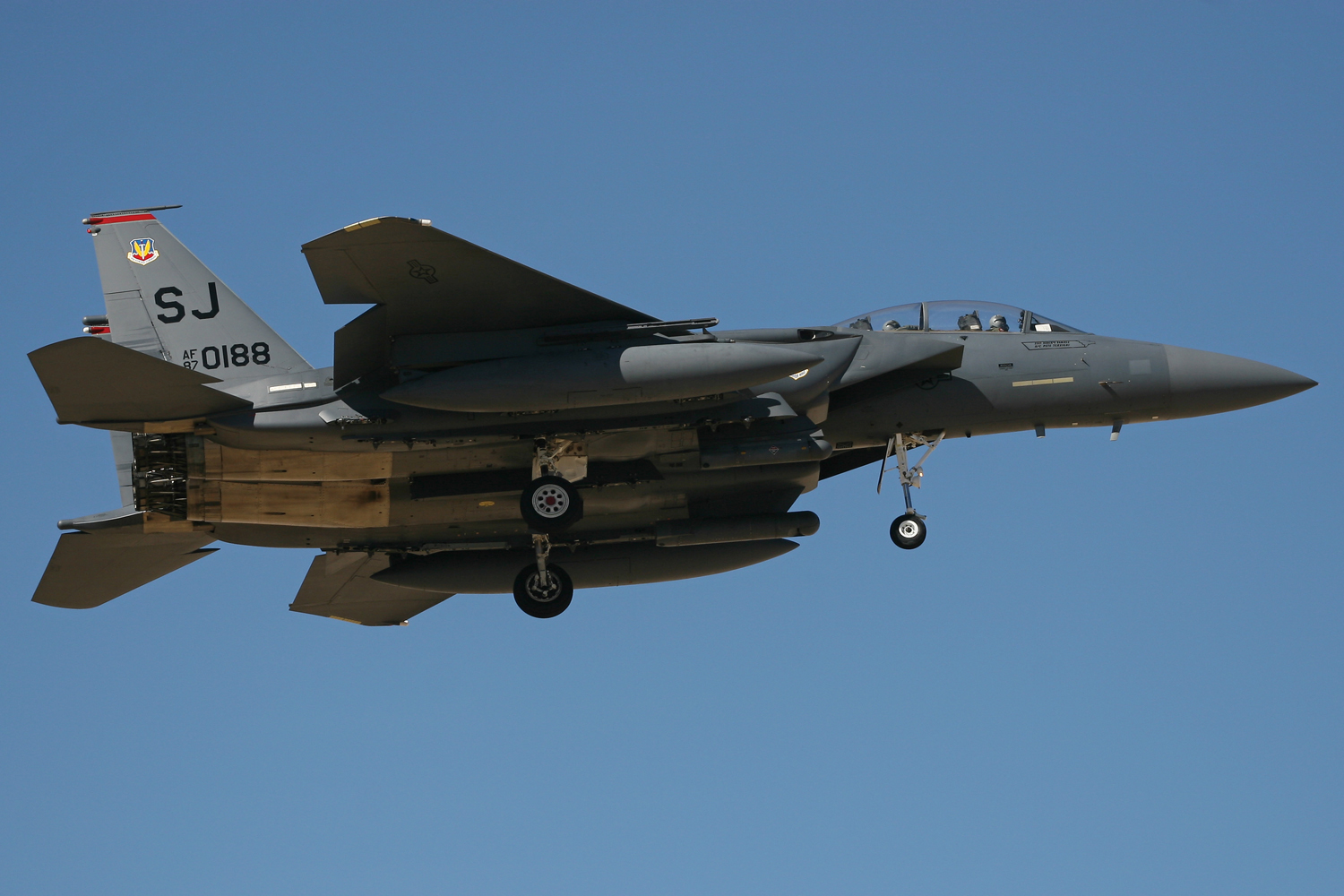
F-15 at Nellis Air Force Base, Nevada, (Photo: Matt Birch, visualapproachimages.com)
I remember when I first heard the F-15 Eagle had zero memory items and pilots were expected to think every problem through before acting. I had just gotten my Air Force pilot’s wings and with the wisdom that 182 hours of jet time instilled in me, I came to the conclusion that McDonnell Douglas, the airplane’s manufacturer, was nuts. Over the years I’ve grown to appreciate the wisdom of thinking before acting, even when traveling supersonic. But, as it turns out, even Eagle drivers have their own list of informal memory items. My favorite was for engine failure during takeoff. It had one step:
- Climb to safe altitude and investigate.
No matter how many procedures in your airplane will require immediate action without reference to a checklist, you should have them memorized. These days few airplanes require us to dive into our emergency procedures more than a few times in a career. You can’t depend on your simulator experience to keep you focused when the real thing happens. But if you have at least the immediate actions down cold, you will be in better shape to when it comes time to pull up the checklist.
9
Mailbag
James,
I am in recurrent right now and our instructor said we should always look to the "bottom of the top" in our CAS message stack when deciding what checklist to run. If you have a stack of reds, ambers, and blues, look at the bottom red message. If you have a stack of ambers and blues, look to the bottom amber message. That way you will always find the cause of the problem. It worked in the simulator so maybe that's the way to go. Maybe you should add it to your rules of thumb.
Signed, R. Fader
Fort Lee, New Jersey
Dear Mister Fader,
I can't answer for all airplanes but that rule of thumb doesn't work in many Gulfstreams. Look at the photo of a message stack from an electrical problem in a Gulfstream G550. The top stack is amber and the bottom of that stack says "Main DC Volts" above a long stack of blue CAS messages. If you go to the G550 QRH (page MB-43), you are told to reduce loads, end of checklist. So you have to complete the flight without the rest of that stuff in blue. But if you think the problem through and first attack the blue "L BPCU Fail" message, which tells you the Bus Power Control Unit has a problem, that checklist tells you to a BITE check has failed, press the RESET button, and you get everything back.
So, Mister Fader, that would not be a good rule of thumb, at least not in Gulfstreams.
References
(Source material)
Aircraft Accident Report 4/90, Department of Transport, Air Accidents Investigation Branch, Royal Aerospace Establishment, Report on the accident to Boeing 737-400 G-OBME near Kegworth, Leicestershire on 8 January 1989
Air Training Command Manual 51-4, Primary Flying Jet, 15 October 1988
Au, Howard, Line Performance of Memory Items, Boeing Commercial Airplane Group, undated.
Aviation Occurrence Report, 4 February, 2015, TransAsia Airways Flight GE235, Loss of Control and Crashed into Keelung River, June 2016
Bombardier BD-700-1A10 Airplane Flight Manual, Publication No. CSP 700-1A, Revision 80, Jun 03, 2014
Cessna Citation X Model 750 Airplane Flight Manual, Revision 2, 10 April 2012
Dassault Falcon 900EX Airplane Flight Manual, DTM561, Revision 9, May 29, 2009.
EASA Research Project 2013.01 Checklist Memory Items
Flight Standardization Board (FSB) Report, Gulfstream GIV-X, GV, GV-AP, Revision 8, 08/01/2012
Flight Standardization Board (FSB) Report, Gulfstream GVI, Revision 1, 7/16/2013
Gulfstream G450 Quick Reference Handbook, GAC-AC-G450-OPS-0003, Revision 34, 18 April 2013
Gulfstream G650 Quick Reference Handbook, Basic Issue, Oct 02/14
Please note: Gulfstream Aerospace Corporation has no affiliation or connection whatsoever with this website, and Gulfstream does not review, endorse, or approve any of the content included on the site. As a result, Gulfstream is not responsible or liable for your use of any materials or information obtained from this site.
